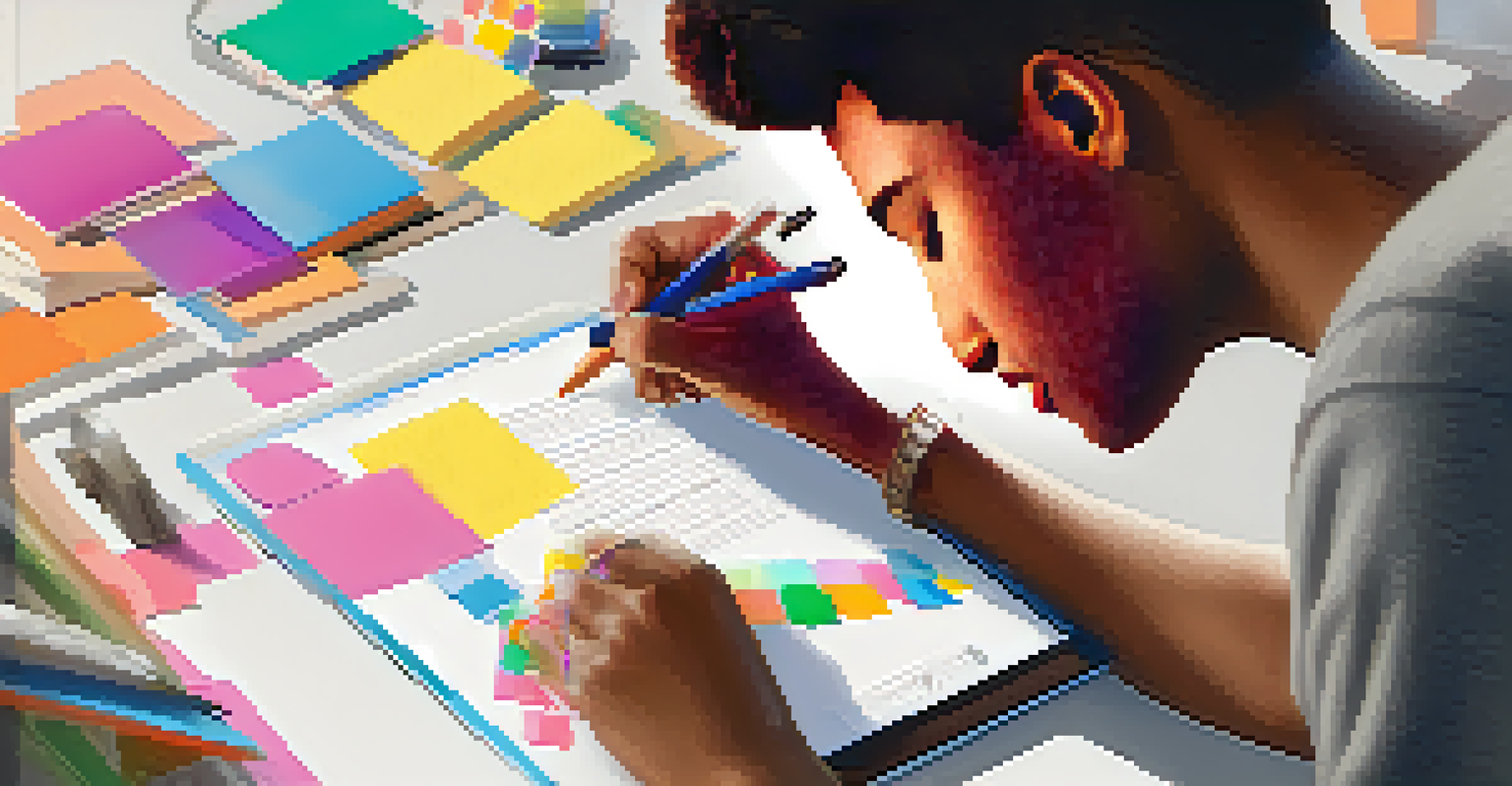Creating a Balanced Blended Learning Model for Students

Understanding Blended Learning: A Quick Overview
Blended learning combines traditional face-to-face teaching with online instruction, creating a flexible learning environment. This model allows students to learn at their own pace while still benefiting from in-person interactions. By integrating technology into the classroom, educators can cater to diverse learning styles and needs, making lessons more engaging and effective.
Blended learning is not just a combination of traditional and online methods; it’s about creating a rich learning environment that adapts to the needs of each learner.
Imagine a classroom where students can absorb material online and then come together to discuss and apply what they've learned. This approach not only enhances understanding but also fosters collaboration among peers. It's a win-win situation, as it encourages independent study while maintaining the benefits of direct teacher support.
As we delve deeper into creating a balanced blended learning model, it's essential to keep in mind that the goal is to enhance student learning outcomes. By thoughtfully merging these educational methods, schools can create a more dynamic learning experience that prepares students for the future.
Identifying Student Needs: The First Step
Before implementing any blended learning model, it's crucial to assess the unique needs of your students. Consider factors such as learning styles, technological proficiency, and access to resources. By understanding these variables, educators can tailor the blended approach to maximize effectiveness and engagement.

For instance, students who thrive in visual learning environments might benefit from video tutorials, while others may prefer interactive simulations. Conducting surveys or informal assessments can provide valuable insights into how to structure the program. This personalized approach ensures that every student has the opportunity to succeed.
Ultimately, identifying student needs is about creating an inclusive atmosphere where everyone can thrive. A tailored approach not only boosts confidence but also fosters a love for learning, making the educational experience more enjoyable for all involved.
Setting Clear Objectives: What Do You Want to Achieve?
Establishing clear objectives is essential when developing a blended learning model. These goals should align with both educational standards and the specific needs of your students. By having a roadmap, educators can effectively measure progress and ensure that the learning experience is purposeful.
The goal of education is to prepare students for the future, and blended learning is a powerful tool in achieving that aim.
Consider using the SMART criteria—Specific, Measurable, Achievable, Relevant, and Time-bound—to frame your objectives. For example, instead of simply stating that students will learn about a topic, specify that they will complete an online module and participate in a group discussion by a certain date. This clarity helps students understand what is expected of them.
With well-defined objectives, both teachers and students can stay focused and motivated. It transforms the learning journey into a more structured experience, allowing for continuous assessment and adjustment as needed.
Choosing the Right Technology: Tools for Success
Selecting appropriate technology is a key component of a successful blended learning model. The right tools can enhance student engagement and facilitate efficient communication between students and educators. From learning management systems to interactive platforms, the choices are abundant.
For instance, platforms like Google Classroom or Edmodo offer streamlined ways for teachers to share resources and track progress. Alternatively, tools like Kahoot! can make learning fun through interactive quizzes. It's all about finding the right fit for your classroom environment and student preferences.
Ultimately, the chosen technology should enhance the learning experience without overwhelming students. A balance between traditional and digital resources can create a seamless transition that fosters both independence and collaboration.
Designing Engaging Curriculum: Blending Content Effectively
The heart of any blended learning model lies in the curriculum design. It should seamlessly blend online content with in-person activities to create a rich, engaging experience for students. The goal is to ensure that both components complement each other rather than work in isolation.
Think of it like a recipe: the right mix of ingredients can create a delicious dish. Similarly, combining online lectures, interactive discussions, and hands-on projects can cater to different learning styles and keep students engaged. This approach encourages critical thinking and application of knowledge.
As you develop your curriculum, consider incorporating a variety of formats, such as videos, articles, and group projects. This diversity not only keeps things interesting but also allows students to explore topics from multiple angles.
Encouraging Collaboration: Building a Learning Community
Collaboration is a vital aspect of any learning environment, and blended learning is no exception. By fostering a sense of community among students, educators can enhance engagement and motivation. Group projects, discussions, and peer reviews are excellent ways to encourage this collaboration.
Consider using online forums or collaborative platforms where students can share ideas and feedback outside of class hours. These interactions can deepen understanding and create a supportive peer network. When students learn from each other, they develop critical social skills that will serve them well in the future.
Creating a collaborative atmosphere not only enhances learning but also builds lasting relationships among students. It transforms the classroom into a vibrant community where everyone feels valued and connected.
Assessing Progress: Evaluating Learning Outcomes
Regular assessment is crucial in a blended learning model to gauge student progress and ensure the objectives are being met. Utilizing a mix of formative and summative assessments can provide a comprehensive view of student understanding. This approach allows educators to adjust their teaching strategies as needed.
For example, quizzes and online discussions can serve as formative assessments that offer real-time feedback on student comprehension. Summative assessments, like projects or exams, can evaluate overall learning outcomes. Both types of assessments play important roles in guiding instruction and supporting student growth.

Ultimately, the goal of assessment is to promote learning rather than simply assign grades. By focusing on progress and understanding, educators can create a supportive environment that encourages continuous improvement.